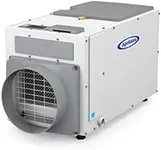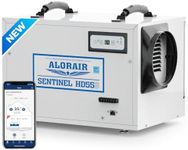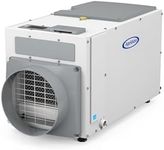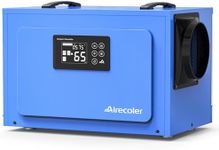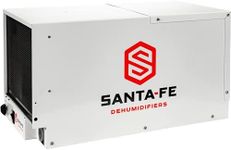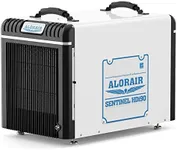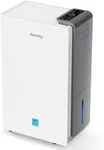Buying Guide for the Best Crawl Space Dehumidifiers
Choosing the right crawl space dehumidifier is essential to maintaining a healthy and comfortable environment in your home. Crawl space dehumidifiers help control humidity levels, prevent mold growth, and protect your home’s structural integrity. When selecting a dehumidifier, it’s important to consider several key specifications to ensure you get the best fit for your needs. Here’s a guide to help you understand these specifications and make an informed decision.Capacity (Pints per Day)Capacity refers to the amount of moisture a dehumidifier can remove from the air in a 24-hour period, measured in pints. This is important because it determines how effective the dehumidifier will be in controlling humidity levels. For small crawl spaces, a dehumidifier with a capacity of 20-30 pints per day may be sufficient. Medium-sized crawl spaces may require a capacity of 30-50 pints per day, while larger or very damp areas might need a dehumidifier with a capacity of 50-70 pints per day or more. To choose the right capacity, consider the size of your crawl space and the level of humidity you need to control.
Coverage AreaCoverage area indicates the maximum square footage a dehumidifier can effectively manage. This is crucial because using a dehumidifier that is too small for your space will not adequately control humidity, while one that is too large may be inefficient. Small crawl spaces up to 500 square feet can be managed by smaller units, while medium spaces up to 1,000 square feet may need a mid-range unit. For larger crawl spaces over 1,000 square feet, a high-capacity dehumidifier is recommended. Measure your crawl space and choose a dehumidifier that matches or exceeds this area.
Energy EfficiencyEnergy efficiency refers to how much energy a dehumidifier uses to remove moisture from the air. This is important for keeping your energy bills low and reducing environmental impact. Look for dehumidifiers with an Energy Star rating, as these models meet strict energy efficiency guidelines set by the EPA. Higher efficiency models may cost more upfront but can save you money in the long run. Consider your usage patterns and choose a model that balances energy consumption with performance.
Drainage OptionsDrainage options determine how the collected water is removed from the dehumidifier. This is important for convenience and maintenance. Some dehumidifiers have a built-in pump that automatically drains water to a nearby sink or out of a window, which is ideal for continuous operation. Others may have a gravity drain that requires the unit to be elevated for water to flow out. There are also models with a water collection bucket that needs to be manually emptied. Choose a drainage option that fits your setup and maintenance preferences.
Noise LevelNoise level refers to how loud the dehumidifier is during operation, measured in decibels (dB). This is important if your crawl space is near living areas or if you are sensitive to noise. Dehumidifiers typically range from 50 to 70 dB. Lower noise levels (50-55 dB) are quieter and less likely to be disruptive, while higher levels (60-70 dB) may be more noticeable. Consider the location of your crawl space and your tolerance for noise when choosing a dehumidifier.
Size and PortabilitySize and portability refer to the physical dimensions and ease of moving the dehumidifier. This is important for fitting the unit into your crawl space and for any potential need to relocate it. Compact and lightweight models are easier to maneuver and install in tight spaces. Larger units may offer more capacity but can be more challenging to move. Measure your crawl space and consider how you will install and maintain the dehumidifier to choose the right size and portability features.
Built-in HumidistatA built-in humidistat allows the dehumidifier to automatically maintain a set humidity level. This is important for consistent humidity control and energy efficiency. The humidistat measures the humidity in the air and turns the dehumidifier on or off to maintain the desired level. Look for models with an adjustable humidistat that lets you set your preferred humidity level, typically between 30-50%. This feature is especially useful for maintaining optimal conditions without constant manual adjustments.
